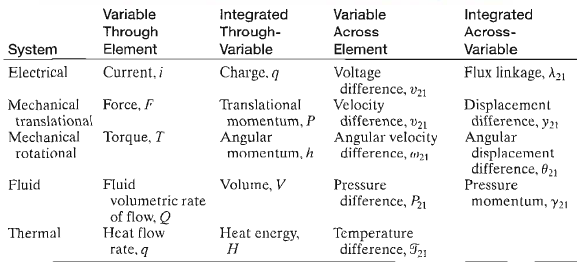Differential Equations Of Physical Systems
DIFFERENTIAL EQUATIONS OF PHYSICAL SYSTEMS
The differential equations describing the dynamic performance of a physical system are obtained by utilizing the physical laws of the process. This approach applies equally well to mechanical, electrical, fluid, and thermodynamic systems. Consider the torsional spring-mass system in Figure 1 with applied torque Ta(t). Assume the torsional spring element is massless. Suppose we want to measure the torque Ts(t) transmitted to the mass m. Since the spring is massless, the sum of the torques acting on the spring itself must be zero, or

which implies that Ts(t) = Ta(t). We see immediately that the external torque Ta(t) applied at the end of the spring is transmitted through the torsional spring. Because of this, we refer to the torque as a through-variable. In a similar manner, the angular rate difference associated with the torsional spring element is


Fig: 1
Thus, the angular rate difference is measured across the torsional spring element and is referred to as an across-variable. These same types of arguments can be made for most common physical variables (such as force, current, volume, flow rate, etc.).

Table 1: Summary of Through- and Across-Variables for Physical Systems